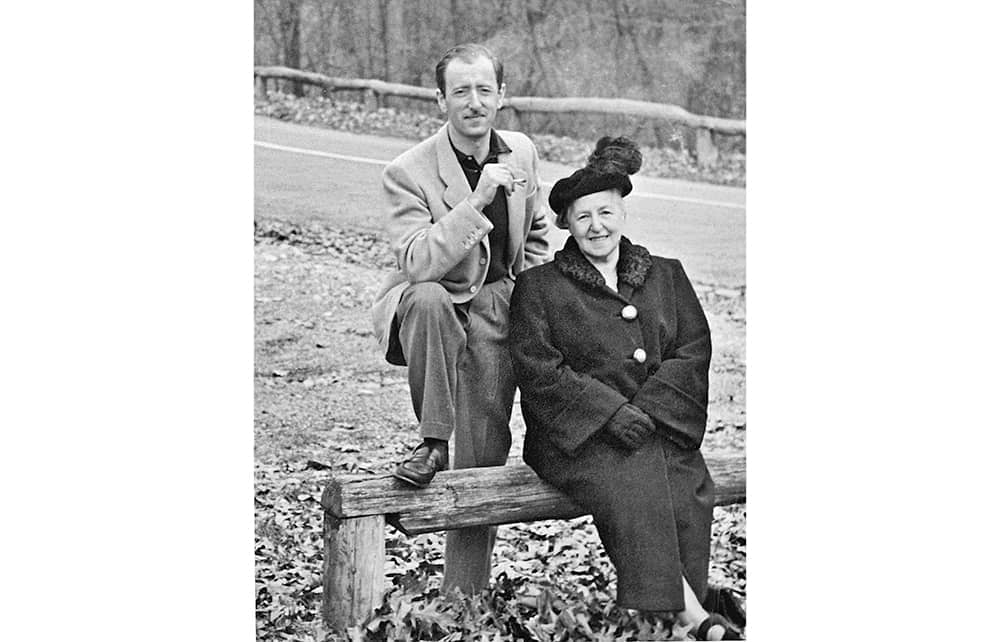‘I can’t cook,’ writes the historian Karina Urbach, ‘which is probably why it took me so long to realise that we had two cookbooks on our shelf at home with the same title’ – a 1938 edition by her grandmother Alice and one from the following year attributed to Rudolf Rösch. When she did notice, however, it provided a key to unlocking some fascinating family history and a little known strand of Nazi persecution.
In 1920 Alice Urbach was living in her native Vienna, ‘a 34-year-old widow with no money’. Her husband had proved a feckless gambler and her father, disappointed by her lack of ambition, had virtually cut her out of his will. Yet she found a way of turning her life round.
Since she had spent much of her childhood hanging out in the kitchen with the gossipy family cooks, she offered to prepare the food for a sister’s society soirées. This led her to create ‘bridge bites’, small open sandwiches that players could pop into their mouths without having to put down their cards, establish a successful cookery school and then pioneer a system of home delivery. In 1935 she distilled her expertise into a bestselling cookbook titled So kocht man in Wien! (‘Cooking the Viennese Way!’)
Alice’s stolen cookbook came to ‘represent all the injustice and humiliation of a dislocated life’
There has been limited research into how works by Jewish authors were ‘Aryanised’ under the Nazis. The 1939 edition of Alice’s book, attributed to Rudolf Rösch, incorporated a few nationalistic flourishes and removed references to dishes such as ‘Rothschild Sponge’ and ‘Beef Wellington’ and passages which had obviously been written by a woman. Nonetheless, whole chapters were reproduced verbatim or with minimal changes.
Even more outrageous was the publisher’s post-war behaviour. When Alice confronted them, the then boss claimed a declaration she had signed under duress was still legally valid and, in a history published for the firm’s 75th anniversary, made a point of criticising her lack of originality and the richness of her recipes. It was only when the German edition of Alice’s book was published in 2020 that the new chief executive finally restored her rights – close to four decades after her death.
Urbach describes how her grandmother escaped from Vienna, worked as a cook for an eccentric English aristocrat, ran a home for refugee children in the Lake District and eventually emigrated to the United States, where she continued to teach cookery into her nineties. But central to her account is the story of the stolen cookbook. Though she admits that this was in some sense ‘a trivial matter’ – Alice lost three sisters in the Holocaust – she also makes poignantly clear how it came to ‘represent all the injustice and humiliation’ of a dislocated life.
Joseph Pearson makes a more general case for using objects to help us understand history by homing in on five, each of which ‘belonged to an individual in their twenties during the second world war’.
He starts with the ‘knife with a swastika’ which his grandfather kept on a basement wall, something he claimed he had ‘liberated… as a captain in the Canadian forces in 1944 or 1945 in the Netherlands’. It is now in Pearson’s possession, since his family had it shipped to him in Berlin by mistake, though ‘Nazi symbols are, of course, illegal in Germany’. By exploring its provenance and subsequent fate clearly and calmly he hopes to ‘de-romanticise’ such objects and so deprive them of their malign power.
Next comes a diary in Sütterlin script, a hard-to-decipher form of handwriting which was only taught widely between 1935 and 1941. Pearson seeks help in one of the ‘Sütterlin lounges’ which have sprung up in care homes across Germany and so uncovers a poignant story of a German soldier who fell in love with a French woman, only to be arrested by the Resistance.
Other chapters, based around interviews, take us much closer to the heart of Nazi evil. Erna Jokisch worked as a cook for Joseph and Magda Goebbels from 1943 to 1945. She is rather too keen to tell Pearson about her recipe for salad dressing, what the Reichsminister liked for breakfast, and how rationing forced her to use ‘false whipped cream’ made of skimmed milk and flour. Yet she also recalls a whole day she spent ‘trying to get 20 ducks out of the house’, which had been supplied by ‘soldiers who were somewhere in Ukraine’.
The double bassist Erich Hartmann, meanwhile, was the last surviving musician from the Berlin Philharmonic under Hitler. The orchestra, as Pearson points out, was part of Goebbels’s ministry for propaganda. It played at Nazi party concerts and was ‘complicit in… the extrusion of Jewish and avant-garde artists’. The performers were not conscripted and enjoyed ‘elite privileges’. But just as Jokisch never stopped to think that Goebbels got his ducks only because German soldiers were effectively starving Ukraine, the musicians seldom asked questions about where the wonderful but often plundered instruments they were given to play had come from. Such myopia, suggests Pearson, tells us something about how Germans of the time were ‘bred to be apolitical, to be wholly absorbed with their particular duty’ (though he also admits, rather confusingly, that we can find similar phenomena ‘well beyond the Nazi era’).
Compared with ‘the traditional documentary record’, the author argues, objects are ‘more likely to make us engage with the unwritten, the undocumented, which is often the territory of the powerless, those who are overlooked’. Interviews with witnesses which focus on objects and the senses can also help historians get beyond ‘stiff ways of retelling’ by awakening vivid, long forgotten memories. These oblique and evocative ‘documentary short stories’ perhaps run the risk of preciousness, but they shed intriguing new light on some overfamiliar history.






Comments